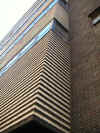 |
New York
Architecture Images-Greenwich Village The New School for Social Research. |
|
architect |
Joseph Urban |
|
location |
66 West 12th Street, bet. Fifth and Sixth Aves. |
|
date |
1930 |
|
style |
International Style I |
|
construction |
brick |
|
type |
Education |
|
|
|
|
images |
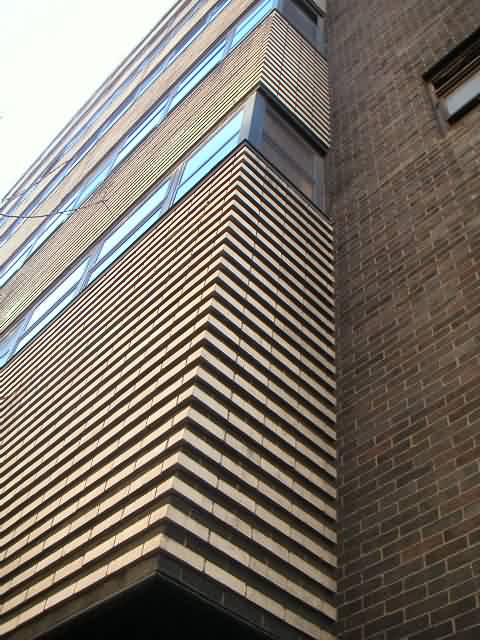 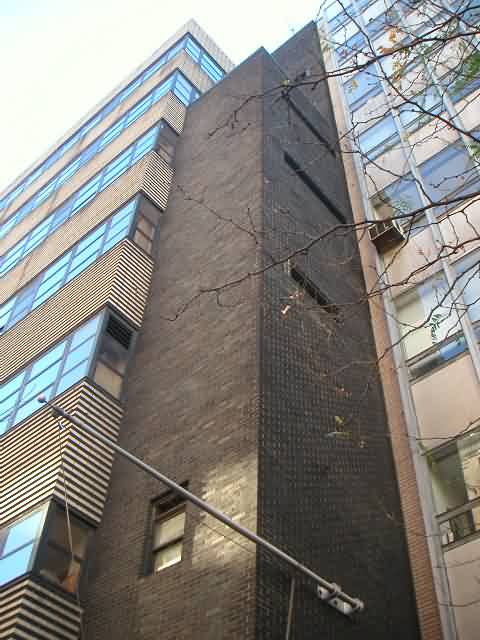 |
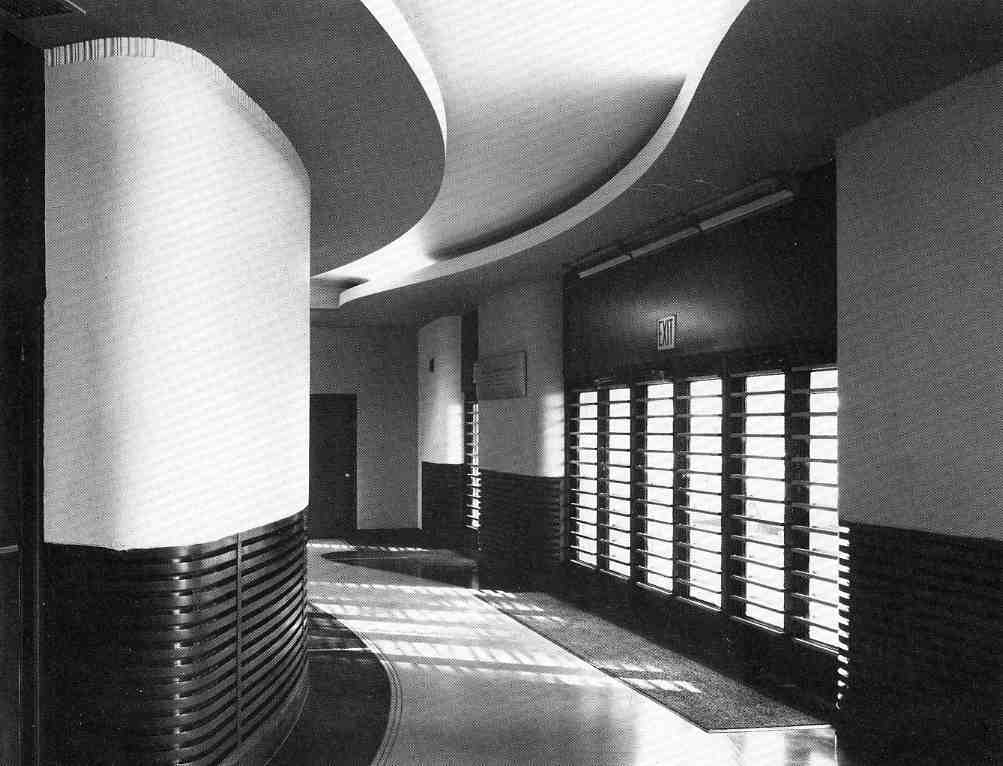 |
|
|
|
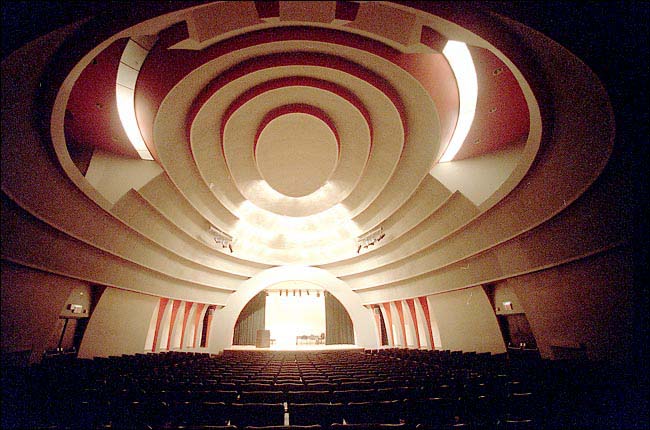 |
| Tishman Auditorium at New School University, designed by Joseph Urban. | |
|
November 14, 2004 STREETSCAPES An Architect's Evocative Legacy Of Fantasy and Drama By CHRISTOPHER GRAY JOSEPH URBAN was both large in life and larger than life. He loved the culinary arts, and his physique showed it. He also loved the fine and performing arts, and his career encompassed designs for opera sets, movie palaces, office buildings, a college, tapestries and books, most of them imbued with his adroit sense of fantasy and drama. Although Urban had only three major commissions in New York, what remains of his sensitive and distinctive work offers an evocative legacy. Born in Vienna in 1872, Urban cannily avoided the law education his father planned for him and surreptitiously studied art, architecture and engineering. His talent sprouted early: in 1891, the khedive of Egypt brought him to Cairo to design a palace. Urban designed books and also secured important architectural commissions from Austrian nobility; his early structures veer between a medieval-like Art Nouveau and early, spare modernism. He arrived in the United States in 1911 as the designer for the Boston Opera Company. He came to New York in 1914 and designed sets for the "Follies'' of Florenz Ziegfeld Jr. Soon, he was creating sets for the Metropolitan Opera. Urban was a restless dynamo. In 1917, The New York Times reported that over a period of three weeks he was working at the New Amsterdam and Century Theaters as well as the Metropolitan Opera. "And while he has doctored lights for Mr. Ziegfeld by night and drafted sketches and ground plans for grand operas by day," The Times reported, "he has found a moment or two in which to apply for his final papers as an American citizen.'' He also designed movies for the newspaper czar William Randolph Hearst's production company. Urban listed himself as "artist" in the 1920 census but edged back into high-end architecture in the mid-20's, designing the Bath and Tennis Club in Palm Beach, Fla., and Marjorie Merriweather Post's spectacular nearby mansion, Mar-a-Lago. Urban's connection with Hearst bore rich fruit in 1925, when the publisher backed a theater for Ziegfeld at the northwest corner of 54th and Sixth. Completed in 1927, the Ziegfeld Theater was a sumptuous cube of limestone, a sort of Mount Rushmore of dramatic Art Deco and modernist ornament. Urban meant its peculiar bowed facade as an architectural poster, with floodlights dramatizing its nearby abstract forms at night. He used classically based ornament but in an entirely new way: two of the broadest engaged columns ever seen in New York, perhaps 10 feet wide; a hypnotic frieze of sinuous, interlocking forms; and two huge, mysterious female figures above, guarding two grimacing masks of comedy and tragedy. If the exterior was striking, the interior was fantastical, an oval auditorium with completely smooth walls and roof, covered with an intricate mural of highly colored, overlapping medieval, biblical and literary scenes, a complex tapestry of color. Critics did not quite know what to make of the Viennese designer's powerful vision. The critic George Chappell, writing as T-Square in The New Yorker in 1927, called the theater "dreadful," especially the interlocking frieze, which he lambasted as "a writhing band of pretzels." But in The Architectural Record, Ely Jacques Kahn praised the building, hailing it as an advance over the predictable "pathetic Adamesque creations, Italian palaces in the latest interior decorator manner," and other typical theater designs. In 1928, Urban completed the six-story International Magazine Building for Hearst on the west side of Eighth Avenue, from 56th to 57th Street. It was constructed of far less interesting cast stone, and the upper three stories were set back slightly to accommodate strange, urn-topped columns that projected above the roof line. The Hearst building looked as much like some Wagnerian funerary monument as the headquarters of a publishing empire, perhaps because Urban planned it to have an additional seven stories, although he left not a hint of his ultimate design. Urban smoked Turkish cigarettes and ate caviar prodigiously. A 1927 New Yorker profile by Kenneth MacGowan said he "has the vitality of two or three athletes." While designing the Hearst building, he was also working for the financier Otto Kahn on a visionary complex for the Metropolitan Opera on the same block. That project, like several others, remains only as designs. In 1930, he built his last major structure in New York, for the ultraprogressive New School for Social Research, at 66 West 12th Street. The seven-story chunky black structure is a dark, beetling mass, despite horizontal stripes of white brick. A 1950's addition to the west has robbed the 1930 building of its original contrast with what were flanking red-brick row houses; the original rendering makes it look trimmer, lighter, than it is now. Written accounts suggest that the facade was more dramatic when the original bright paint colors of the interiors were visible through the windows. Urban died in 1933. The color and breadth of his designs are sumptuously presented in the 1992 book "Joseph Urban: Architecture, Theater, Opera, Film" (Abbeville Press) by Randolph Carter and Robert Reed Cole. They relied on the extensive collection of Urban's papers at the Rare Book and Manuscript Library at Columbia University. Simply reading through the inventory of his projects communicates the sense of his vitality. The inventory is at www.columbia.edu/cu/libraries/indiv/rare/guides/Urban . What is left of Urban's work in New York? At the Hearst building on Eighth Avenue, only the high urns peep out over construction netting - the company is erecting a 42-story tower, designed by Norman Foster, within and above the shell of the 1928 building. The new design's faceted, zigzag steel framing is as strange as anything Urban ever designed. Time will tell whether it is as wonderful. The New School's facade is more or less unchanged, but it has also been possible, at least up to now, for a casual visitor simply to enter unchallenged into the original auditorium - now officially the Tishman Auditorium of New School University. That egg-shaped room focuses on a broad, arched proscenium. Painted in nine tones of gray, the delicate, layered ceiling was restored in 1992 by the architect Rolf Ohlhausen. The auditorium is one of the city's great modern interiors - although in a 1931 article in the magazine The Arts, the young architect Philip Johnson criticized what seemed to him the irrationality of its design. In the New School's recent Arnhold Hall, at 55 West 13th Street, the architects Fox & Fowle have used horizontal stainless-steel tubes on the facade to pay a discreet homage to the original building on 12th Street. The masterpiece that was the Ziegfeld was demolished in 1966, when the city's landmarks preservation movement was in its early years. But fragments of Urban's creation survive. A three-panel screen made from a lush, floral mural from the Ladies Lounge recently sold on eBay for $2,300. And in the 1960's, the producer Jerome Hammer, through a friend who was working on the successor building, managed to get one of the mysterious female heads from the upper portion of the facade. Mr. Hammer put it in the front areaway of his brownstone at 52 East 80th Street, where it remains. At the Ziegfeld, it was never meant to be seen from street level; the blank eyes and crisp geometric modeling of the head give it a severe glamour. The female head was one of a pair. Perhaps, somewhere, its colleague survives. Copyright 2004 The New York Times Company |
|
|
The New School for Social Research was founded
in 1919 as a center for "discussion, instruction, and counseling for
mature men and women." It became America's first university for adults.
Over the years, it grew into a major urban university made up of seven
academic divisions, and in 1997, it was officially renamed New School
University. The University currently enrolls more than 25,000 students
annually. Their diversity of ages, aspirations, and social backgrounds
enriches the institution with a wide variety of cultures, perspectives,
priorities, interests, and talents.
The New School, the founding division of the University, has never neglected its original mission. It continues to serve the intellectual, cultural, artistic, and professional needs and interests of adult students. The New School curriculum, published in the New School Bulletin and on this website, provides an enormous range of opportunities for intellectual inquiry and skills development to take place. In preparing a curriculum each term, there are certain values that inform the process. These were articulated in a statement of purpose prepared by a University Commission on Continuing Education in the spring of 1984: "The New School does not set any limits to its programs in regard to subject matter. Whatever seriously interests persons of mature intelligence properly falls within the province of the school. History and philosophy, the social and behavioral sciences, literature and art, the natural and biological sciences, education, and ethics naturally take up a significant part of The New School curriculum, since these are the fields in which the forces of culture and change are most significantly active, and in which human beings, their institutions, and their products are directly studied. The centrality of the liberal arts is maintained and strengthened in every possible way, but not to the exclusion of other educational programs that serve a legitimate need for mature adults in a mature community." Every New School Bulletin has reflected these values, although an examination of bulletins over the years would reveal dramatic differences among them. The first six courses offered by The New School, in 1919, dealt exclusively with matters of concern to the then-emerging social sciences -- which reflected the primary interests of the founders. But early in the institution's history, necessity and interest combined to produce a gradual broadening of the program. Courses in drama and literature soon appeared, followed by architecture and film, business, journalism, music, art, science, dance, speech and languages, and computers. Today, the New School program covers an extensive breadth of subject matter. Some of the finest minds of the 20th century developed unique courses at The New School. W.E.B. DuBois taught the first course on race and African-American culture offered at a university; Karen Horney and Sandor Ferenczi introduced the insights and conflicts of psychoanalysis; Charles Abrams was the first to explore the complex issues of urban housing; the first university course in the history of film was taught at this institution; and in the early sixties, Gerda Lerner offered the first university course in women's studies. Over the years, lectures, seminars, and courses have examined most of the important national and international issues of our time. To this day, many talented teachers and professionals choose The New School as a place to introduce new courses and explore new ideas. Every term, hundreds of courses, many unique to this institution, are offered for credit by The New School, designed and developed by teachers who not only teach what they know best but also what they are most interested in. The New School maintains its tradition of educational innovation and keeps its place on the cutting edge of the intellectual and creative life of New York City. Accreditation The New School and its degree programs are fully accredited by the Commission on Higher Education of the Middle States Association of Colleges and Secondary Schools. Its credits and degrees are recognized and accepted by other accredited colleges, universities, and professional schools throughout the United States. New School University, a privately supported institution, is chartered as a university by the Regents of the State of New York.
|
|
|
links |
http://www.nsu.newschool.edu/index.htm |